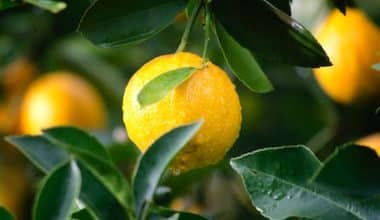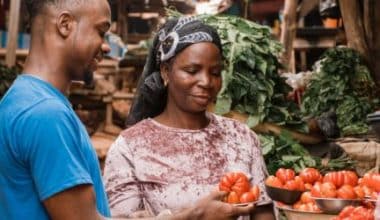Nigeria has a lot of natural resources. Forests, which provide bamboo – a great building material – are one of Nigeria’s most abundant resources. Bamboo farming and production offer agricultural entrepreneurs in Nigeria a lucrative and profit-oriented opportunity.
This post will explain how to start your own bamboo-growing business in Nigeria and earn six-figure profits each year.
You may have heard about the several advantages of bamboo. It is environmentally friendly, long-lasting, and requires little upkeep. However, there is a catch: in order to receive these benefits, you must first learn how to grow it. If you want to start your own bamboo farm or business, this article will guide you through the process!
What is Bamboo?
Bamboo is a type of fast-growing woody grass in the Poaceae family. It is used for construction, furniture, and handicrafts due to its robust, lightweight, and flexible characteristics. Bamboo’s scientific name is Bambusoideae, and it has several species that thrive in diverse places of the world, including Nigeria and Africa.
Bamboo cultivation is becoming increasingly popular in Nigeria and Africa due to its potential as a sustainable and eco-friendly crop with a wide range of uses and benefits.
What is Bamboo Farming?
Bamboo may grow from a seed to an overachiever in less than 18 months. It is not a hidden fact that Bamboo is one of the fastest-growing plants on Earth since it simply needs groundwater, sunlight, air circulation around its leaves, and space to expand itself out. Bamboo grows so swiftly that some people use it as toothpicks or chopsticks!
Also, Bamboo is utilized to create rapid growth, a high strength-to-weight ratio, and natural pest resistance. Because it thrives in a range of settings, it is frequently used as a wood substitute.
The one disadvantage of bamboo’s high strength-to-weight ratio is that it rapidly breaks when exposed to the elements because it lacks a root system to support the plant.
Bamboo is used by some Pandas for food and shelter. There are only about 1,600 left in the wild! Bamboo also contributes to the health of forest ecosystems. Each year, their decaying leaves release roughly 5 million metric tons of carbon dioxide into the atmosphere, which is more than most trees emit in their lifespan.
Because of its fast growth rate and renewable nature, bamboo is an excellent alternative material to treat for those seeking to be more sustainable or eco-friendly. Bamboo can even be transformed into charcoal, which has numerous industrial applications.
The bamboo market is rapidly expanding, but the plant’s future appears bright and stable as long as people continue to recognize the importance of this natural resource.
Reason Why You Should Start Bamboo Farming
You may have never heard of bamboo, but it is one of the most useful resources on the planet. Bamboo, like cotton or silk, can be used to manufacture paper and clothing, but it also has numerous other uses, including animal feed and fuel in developing nations.
All you need are a few simple tools: pots, pans, spoons- anything that will assist in cutting through this difficult stuff! You should also avoid overwatering your plants since too much moisture may suffocate them. What about the frequency of watering? It all depends on where you live; if there is adequate rain (or humidity), then less frequently should suffice because they do not require daily touch with water. However, if it does not get moist naturally, you may want to water it every day.
Each species of bamboo can provide you with diverse textures and colours, as well as be a lovely addition to your décor. Although it may be tempting to plant too much, remember that each type of bamboo can only grow in specified temperatures and soil compositions! Heat-loving cultivars thrive in hot climates, whereas cold-resistant species thrive in temperate climates.
Don’t be concerned if your bamboo becomes infested with illnesses! Bamboo is extremely resistant to sickness. Just remember to maintain your bamboo (and other plants) insect-free, or it may spread to all of your other plants!
Bamboo can be harvested at various stages of development. Planting seeds and allowing them to mature organically, which takes two to five years before they begin producing leaves, is the quickest way to obtain bamboo.
When the plants can produce 10-15 cm of new growth every year, they are suitable for harvesting. If you want a more sustainable option, wait until fresh bamboo shoots (or culms) appear and harvest them from the root.
The Advantages of Bamboo Farming in Nigeria
Some of the most common advantages of bamboo cultivation in Nigeria are as follows:
- Environmental sustainability: Bamboo is an environmentally beneficial crop that helps to minimize soil erosion, conserve water, and reduce carbon dioxide levels in the atmosphere.
- High growth rate: Bamboo is one of the fastest-growing plants on the planet, with some kinds growing up to 91 cm each day.
- Versatility: Bamboo has a wide range of applications, including construction, furniture manufacturing, and paper production.
- Cost-effectiveness: Bamboo is a low-cost crop that requires little upkeep.
- Drought tolerance: Bamboo is a drought-tolerant crop that can thrive in low-rainfall settings.
- Soil enhancement: Bamboo can improve soil quality by contributing organic matter and boosting nutrient availability.
- Job creation: Bamboo growing has the potential to provide employment opportunities for local communities, particularly in remote locations.
- Revenue generation: Bamboo growing can provide a source of revenue for farmers, especially those who live in places where other crops do not thrive.
Types Of Bamboo Used For Bamboo Farming In Nigeria
Bamboo farming in Nigeria and Africa can involve growing a variety of bamboo species, depending on the final use of the bamboo product. The following are some of the most prevalent types of bamboo used in bamboo farming in Nigeria and Africa:
- Guadua: This is a huge, sturdy bamboo species that is often used in construction.
- Bambusa: Bambusa is a versatile bamboo species that may be used to make a variety of products, such as furniture, handicrafts, and textiles.
- Dendrocalamus: A huge, fast-growing bamboo species utilized in a variety of applications such as construction, furniture, and paper manufacture.
- Phyllostachys: This is a species of bamboo that is extensively utilized in the production of bamboo flooring, furniture, and other decorative products.
- Moso: A common bamboo species for bamboo farming, it is utilized for a variety of purposes such as construction, flooring, furniture, and paper-making.
- Thyrsostachys: A fast-growing bamboo species utilized for a number of activities such as construction, handicrafts, and paper manufacture.
Each bamboo species has distinct traits, growth patterns, and applications. Farmers may make informed selections about which type of bamboo to produce for their unique business goals by learning these diverse forms of bamboo.
How To Start Bamboo Farming In Nigeria
Follow these steps to successfully start and run a bamboo farming business in Nigeria:
#1. Gain Knowledge
Farmers and agropreneurs interested in bamboo production must learn more than simply the basics of cultivation and management. Seek the advice of an experienced bamboo farmer or consultant if feasible. Bamboo farming requires specialized skills and understanding.
#2. Adequate Capital
Another thing to accomplish before producing bamboo is to collect the necessary funds to run a bamboo plantation. The farming budget should include funds for the purchase and preparation of farmland, funds for the hiring of farm machinery and farmhands, and funds for the purchase of the best variety of bamboo seedlings, fertilizers, pesticides, and fungicides.
#3. Appropriate Land
Bamboo cultivation for commercial purposes necessitates a large amount of land. Acidity should be determined through soil testing. Liming is an important part in preparing non-acidic soil types for bamboo farming. The pH level of the soil should be between 5.5 and 7.5. A water-retentive soil in locations with moderate rainfall and enough sunlight is critical for its existence.
#4. Choose the Correct Bamboo Species
The bamboo species chosen should be compatible with the purpose for which it is grown. It should also be appropriate for the farmland’s soil and climatic circumstances. In order to double-check and avoid extra risk, ask important questions of reputable providers. Find the best varieties of bamboo seedlings or nodal cuttings near dwelling areas from seedling wholesalers or an agricultural business.
#5. Propagation
Plant clumping bamboo seedlings or node shoots 3 to 4 inches apart to allow for proper foliage spread. Running seedlings, on the other hand, might benefit from a 5 to 7-space width. Few types, however, are planted 5m or two feet apart for faster but less dense foliage. Planting bamboo next to each other slows the growth rate.
Running bamboo grows quickly, adding a minimum of one foot per year, whereas clumping bamboo grows at a rate of one foot per year. It is crucial to note that the rate of bamboo growth is affected by the environmental conditions of its surroundings.
#6. Maintenance And Harvest
Bamboo farmers appreciate the plant’s tolerance to drought, pests, and diseases. It is also highly adaptable to most soil types, yet production of this crop requires patience because to its perennial nature.
To maintain a high yield during harvest, it is critical to understand the proper care strategy for a certain bamboo type. Although this plant does not require much moisture, areas of moderate rainfall or bi-weekly irrigation in drier climates will likely mean the difference between abundant and poor crops.
Farmers may discover that certain species of bamboo are invasive and difficult to maintain, necessitating annual pruning or cutting down of leaves and roots. Herbicides should also be used to discourage weed-bamboo competition.
How To Process & Package Bamboo In Nigeria or Africa
Here’s a step-by-step guide to bamboo processing and packaging in Nigeria and Africa:
#1. Harvesting
Harvesting mature stems is the first stage in bamboo processing. This is normally done when the plant is between the ages of 3 and 5 years. Using a sharp knife or saw, cut the stem at a 45-degree angle.
#2. Dividing
The bamboo stems are divided into smaller portions after being collected with a machete or bamboo splitter. This method carefully splits the stem lengthwise into smaller segments.
#3. The drying process
The bamboo strips must now be dried. This can be accomplished by leaving them out in the sun for a few days or by using a drying machine. Drying reduces the moisture level of the bamboo, preventing mould and insect infestation.
#4. Therapy
Bamboo should be treated with a preservative to boost its resilience and lifetime. This can be accomplished by soaking the bamboo in a borax and boric acid solution or by using a wood preservative solution.
#5. Finishing
The final step in bamboo processing is to finish it. This entails sanding the bamboo’s surface to remove any rough edges and applying a finish coat to protect it from moisture and corrosion.
#6. Packaging
The bamboo can be packaged for sale once it has been treated and finished. Bundle the bamboo strips together and cover them in a plastic sheet or a natural fiber like jute or sisal.
How Fast Does Bamboo Grow?
According to Guinness World Records, some bamboo species may grow up to 2.91 feet every day – or 1.5 inches each hour! So, if you sit with a bamboo culm long enough, it might simply sprout before your eyes!
Why is Bamboo So Expensive?
Breathability, luxury, durability, and superior softness are what you’re paying for. Not all bamboo items are created equal, yet even the lowest-grade products are more comfortable than some of their textile counterparts.The price of bamboo is primarily determined by the production process.
Can Bamboo Grow in Nigeria?
The bamboo dominates the natural vegetation in these twelve Nigerian states: Adamawa, Gombe, Bauchi, Borno, Kano, Katsina, Kaduna, Kebbi, Sokoto, Jigawa, Yobe, and Zamfara.
Which Country is Rich in Bamboo?
After China, India is the second-richest country in terms of bamboo genetic resources. Together, these two countries own more than half of the world’s bamboo resources.
Is Bamboo Cheap to Produce?
The bulk of bamboo fabric produced worldwide is bamboo viscose, which is inexpensive to make while having environmental drawbacks and posing occupational hazards.
Conclusion
Bamboo farming is the answer if you want to create a profitable business with the potential for six-figure revenues. This plant grows well in Nigeria and can be utilized as a raw material or processed into a variety of products such as furniture, paper products, textile fibres, and so on.
The advantages of this technique are not only environmental but also monetary. Individuals and organizations can both start bamboo farms. The Nigerian government is already pushing bamboo growing in the northern region of the country, offering numerous benefits to farmers, such as tax breaks and free land for planting, among other things. You, too, can start a business like this and profit almost instantly.
- 20+ Most Popular Building Materials and Their Uses 2023
- Good Skateboard Brands: For Beginners And Pros 2023(Updated)
- EARTH FRIENDLY PRODUCTS: Meaning, 20+ products & [ free tips] updated
- HARVEST TIME TRACKER: Harvest Software Reviews & Pricing 2023
- TRADE MANAGEMENT: Global Trade Management Solution & Software






